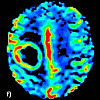Antibody Glycosylation and Its Impact on the PK and Pharmacodynamics of Monoclonal Antibodies and Fc-Fusion Proteins http://t.co/7OLmZ4Sba2
Understanding the impact of glycosylation and keeping a close control on glycosylation of product candidates are required for both novel and biosimilar monoclonal antibodies (mAbs) and Fc-fusion protein development to ensure proper safety and efficacy profiles. Most therapeutic mAbs are of IgG class and contain a glycosylation site in the Fc region at amino acid position 297 and, in some cases, in the Fab region. For Fc-fusion proteins, glycosylation also frequently occurs in the fusion partners. Depending on the expression host, glycosylation patterns in mAb or Fc-fusions can be significantly different, thus significantly impacting the pharmacokinetics (PK) and pharmacodynamics (PD) of mAbs. Glycans that have a major impact on PK and PD of mAb or Fc-fusion proteins include mannose, sialic acids, fucose (Fuc), and galactose (Gal). Mannosylated glycans can impact the PK of the molecule, leading to reduced exposure and potentially lower efficacy. The level of sialic acid, N-acetylneuraminic acid (NANA), can also have a significant impact on the PK of Fc-fusion molecules. Core Fuc in the glycan structure reduces IgG antibody binding to IgG Fc receptor IIIa relative to IgG lacking Fuc, resulting in decreased antibody-dependent cell-mediated cytotoxicity (ADCC) activities. Glycoengineered Chinese hamster ovary (CHO) expression systems can produce afucosylated mAbs that have increased ADCC activities. Terminal Gal in a mAb is important in the complement-dependent cytotoxicity (CDC) in that lower levels of Gal reduce CDC activity. Glycans can also have impacts on the safety of mAb. mAbs produced in murine myeloma cells such as NS0 and SP2/0 contain glycans such as Galα1–3Galβ1–4N-acetylglucosamine-R and N-glycolylneuraminic acid (NGNA) that are not naturally present in humans and can be immunogenic when used as therapeutics.
J Pharm Sci
Via Krishan Maggon



 Your new post is loading...
Your new post is loading...










REVIEW
Antibody Glycosylation and Its Impact on the Pharmacokinetics and Pharmacodynamics of Monoclonal Antibodies and Fc-Fusion ProteinsLiming Liu*Article first published online: 14 APR 2015
DOI: 10.1002/jps.24444
© 2015 Wiley Periodicals, Inc. and the American Pharmacists Association
Issue
Journal of Pharmaceutical SciencesEarly View (Online Version of Record published before inclusion in an issue)